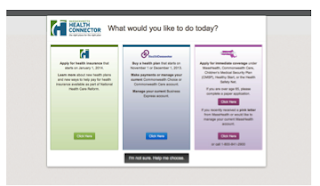Show perspective, not pedigree.
Recently, our CEO Karen Kaplan wrote a great piece that was featured in The Huffington Post titled: "How to Get Hired: Show Perspective, Not Pedigree." In this article, she covers various aspects in hiring the right person. Aspects like diversity, character, openness, collaborative, someone who is comfortable with the uncomfortable, confident yet humble and most importantly willing to work hard.
Kaplan writes, "One of the founding fathers of the advertising industry, Bill Bernbach, once said, "Throw out the resume. Hire on character." He believed -- and I do, too -- that you can hire smart people, or you can hire nice people, but the way to win is to find ambitious, curious people who are both smart AND nice."
This is not new thinking by any means, but we are in the age of highly qualified, skilled, over educated people entering our lives constantly. You are probably one of them. So what will help you get the job vs. that next person. You, as a person. The smile you may have, the warmth you bring to a room, the calmness that you may present while explaining a complicated process. I guess it's just called being human. These are the people who will succeed and move through the ranks.
"Priya has a tough time with numbers and grasping concepts, it's best not to expect too much from her."
I'm one of those folks that did well in life not due to my stellar academic background, in fact I still have a report card somewhere from middle school where my math teacher stated "Priya has a tough time with numbers and grasping concepts, it's best not to expect too much from her." Yah, awesome freakin teacher - isn't that against the law to say that? HA! I'd love to show him where I am today as a Senior Vice President at one of the largest advertising firms in Boston.
Strive for a higher EQ vs. IQ.
My point here is at some point it became clear to me that common sense and striving for a higher EQ (emotional quotient) vs. IQ (intelligence quotient) is what will define success for me. So I focussed on that strength of mine. Now this isn't to say that I'm not smart, or don't know anything. I won't sell myself short either… you don't get to go to Boston College without a little knowledge and know how!
Hire based on intuition.
My first manager at a firm called Clarke & Company hired me back in 1994 based not on my transcript but on character, charisma, willingness to learn and do hard work. They hired me based on their INTUITION that I would do well and I did. I remember that all the time when I meet people and yes you will see me psychoanalyzing you with a smile on my face when I first meet you to figure out who you really are. But I will say my intuition and gut feelings have yet to fail me.
Personal Case Study.
Here's another first hand of experience that highlights all the aspects of this post.
As a working mom, one of your hardest decisions that you are sometimes forced to make as early as your baby hardly turns 10 weeks old is to bring a complete stranger into your house to take care of your newborn. There are so many different feelings that take place as a new mom and you tend to question everything about yourself and every decision you make as you place your most precious love in this persons hands.
This person after all will now be spending potentially more time with your child than you…. and that's hard to stomach. Four years ago, Suhani came into our lives and the time came to find someone to take care of her so that we could continue working. We interviewed many people, very qualified people. But I chose to go with my gut and I just wasn't getting a good feeling from anyone.
Then Fanny was recommended to me. On paper, she didn't seem like a great fit, she hardly spoke english though she had taken care of children for over 20 years. Then we met her. Her warmth and love immediately came across when she saw Suhani and picked her up and knew exactly what to do with her. Suddenly the fact that she only spoke spanish seemed like a ridiculous reason not to hire her.
She was a good person and I'm so glad I trusted my gut.
We were blessed to find her - an incredibly loving, caring nanny. She and her husband have now cared for Suhani and Arjun for the last four years and they've taken care of us as well.
Today is actually their last day with us as they make their journey back to their motherland Columbia to be with their family. Thank you Fanny and Jairo for loving our children as much as we do and for showering them with love and making them feel safe and secure when we weren't' there to do so. Thanks to you we all learned spanish and we consider you family and will be eternally grateful to you both. You will be missed dearly!!!!
----
Visit my site www.utopia46.com for more UX info!













